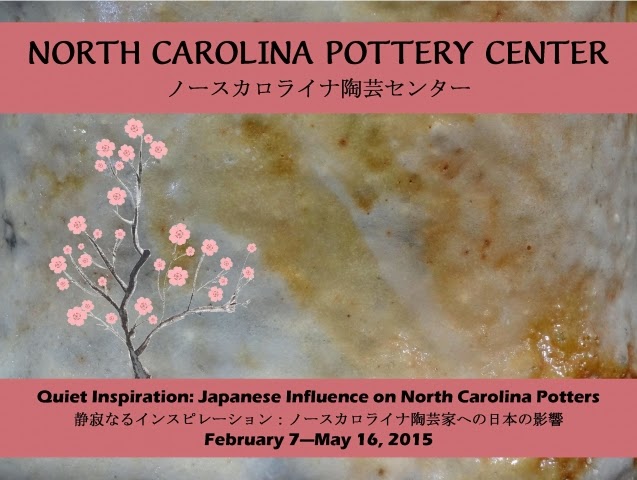Tuesday - Clay Share - To Twist or to Turn
 |
| Thrawan a pot |
If we want to be traditional about what we call making a pot on the potter’s wheel, maybe we should call it thrawan….which means to twist or to turn.
To twist or to turn.... some folks say they throw their pots and others say they turn their pots....maybe we should be saying we are thrawan pots. Find out why... see the article
"Why On Earth Do They Call It Throwing?", by Dennis Krueger.
 |
| Thrawan a pot |
Thursday - Potters Pick: Yoshiki Onoyama
 |
| Yoshiki Onoyama |
For the next few weeks we will be featuring the demonstrators and the presenters that will be a part of the upcoming
North Carolina Potters Conference, in Asheboro, NC hosted by the Randolph Arts Guild on March 6-8, 2015. This year we are lucky to have a visiting artist here at the same time at STARworks. We have included a **bonus day** on March 5, at
STARworks in Star, NC.
Yoshiki Onoyama teaches at the Okayama University in Japan. He is an accomplished potter and has a deft hand when decorating his porcelain ceramics. His technique, Sometsuke (Blue paint on porcelain), stamp and inlay decorations are beautifully executed.
March 5, 2015 - Thursday – **BONUS DAY**
PLEASE NOTE – This day’s events will be hosted at STARworks in Star, NC.
**A separate Registration Fee of $50 to attend – Look for it on the registration form**
Thursday March 5
8:00 Registration
9:00 Introductions
9:45 Shizuko Kohara - Shigaraki
10:30 Break
11:00 Peter Hamann – The Japanese Tea Bowl, Context and Perceptions
11:45 Slide Presentation – Yoshiki Onoyama
12:15 Lunch
1:30 Demonstration – Yoshiki Onoyama
-------
6:00 Networking / Social Hour – Sponsored by Rising Sun Pottery – Open to all conference attendees and will be held at the Randolph Arts Guild.
 |
| Yoshiki Onoyama |
Sunday - Playing off the Instrument - Beauty and the little woolly Beasty
 |
| Borneo Pitcher Plant, Nepenthes rafflesiana elongata and woolly Bat - Photo Credit Holger Bohn |
We are fascinated by symbiotic relationships, a mutualistic relationship when two organisms of different species "work together," each benefiting from the relationship. This particular mutual relationship is between a
small woolly bat and a carnivorous pitcher plant which was found on the southeast Asian island of Borneo. The pitcher plant provides a perfect room for the Bornero bat to take shelter in, and in return the plant benefits from the nutrients in the bats' droppings.
In 1970 I had a job when I was in high school, working for the entomology and biochemistry departments of Oklahoma State University collecting spiders. Part of the job was to drive out into the country side to find fields that looked promising as tarantula habitat. When we found a likely location, we would hunt and frequently find colonies of tarantulas that nested in individual burrows in the ground, usually many yards apart. To collect the tarantula, we used a spade and a coat hanger wire as a probe to locate and coax the spider out with. One would gently fish into the hole with the wire until an aggressive tapping on the wire would signal the presence of the tarantula defending its realm, at the same time one could determine how deep in the ground the spider was. A spade full of dirt would then be removed, determined by that depth, and the process repeated until.....out popped a..... greasy grey toad!
This didn't happen every time, but frequently the tarantula would share its burrow with this particular small smooth grey species of toad. It wasn't until just recently that I found out more about who this toad was, and
Odd Couple indeed.
We post our: Clay Share - Tuesday,
Potters Pick - Thursday,
Playing off the Instrument - Sunday









































